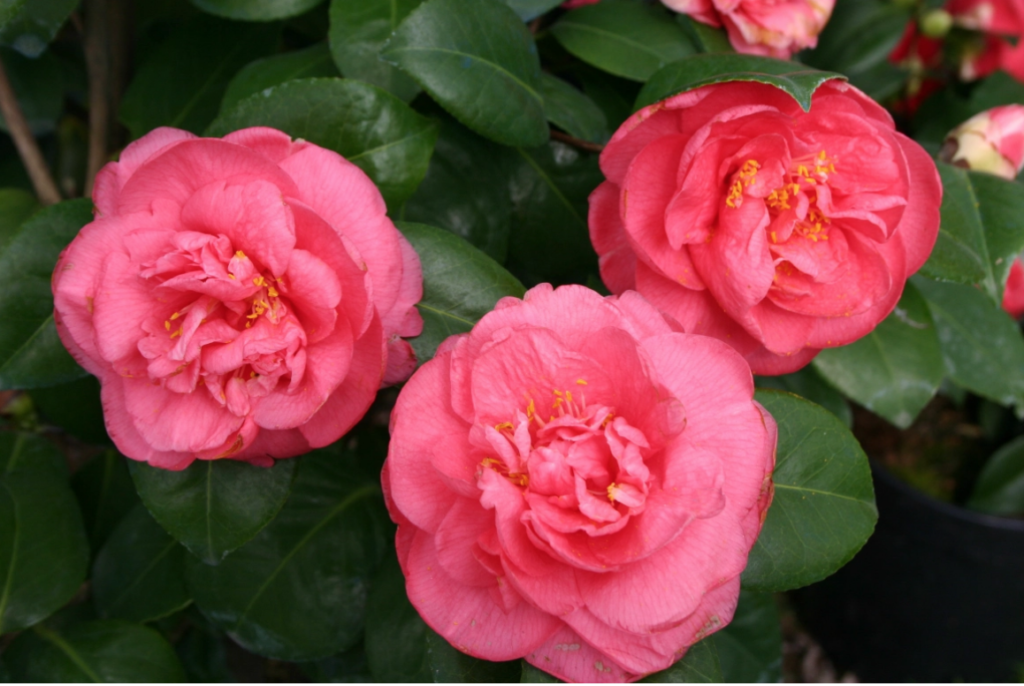
The beginning of spring in Tuscany, usually heralded by the annual opening to the public of hidden camellia gardens above Lucca, was cancelled this year due to the Coronavirus health crisis. But those wishing to see the graceful flowers are in luck as the Ancient Camellias Festival invites the public to come enjoy the rare Sasanqua camellias, which bloom in the fall.
For more than 30 years, two small villages in Tuscany provide the setting for the spring camellia festival, Antiche Camelie della Lucchesia. This year Sant’Andrea and Pieve di Compito have organized Camellietum Compitese on the weekend of October 24-25 showing off the Sasanqua camellias, called by the Japanese “the flower of mountain tea” and sometimes referred to as the Samurai camellia.
The two hamlets lie at an elevation of 1000 meters (3000 ft.) with cool, shady woodlands and streams and brooks creating the high humidity and providing the optimum environment for the camellia. From medieval times to the Renaissance, silk was spun into textiles in the city below, Lucca, 12 kilometers (seven miles) south. Merchants had a thriving business in the Orient, eventually importing camellias from Japan for their homes and villas in the 1800s. The plants would find their ideal home in the surrounding hills.
Walking through the villages, one is taken back in time with the stone walls, cobblestone streets, villas and a labyrinth of gardens in which camellias take a starring role. Today the municipalities host the Camellietum, a natural preserve filled with more than 1000 species in a showy palate of pink, red, white, fuchsia and white speckled with red. Paths lined with the flowers cascade down the hillside beside the gurgling Visona stream. Divided into zones, many of which are dedicated to musicians, a visit offers the guest a peace filled visual indulgence.
Another unexpected discovery, influenced by Japan, visitors can find 2500 tea plants growing on the hillside. In the 1980s Guido Cattolica, realizing that climatic conditions in the villages were similar to those of Japan, had this crazy idea to cultivate tea plants. The only tea plantation in Italy, Cattolica overseas five harvests yearly producing 15-16 kilograms of tea. The tea, derived from the delicate flowers of the Camellia Sinensis leaves, produces four different types depending on the processing: green, white, black and oolong varieties.
The organizers of Camellietum Compitese invite guests to visit the villages and offer a program including guided nature walks with a botanist, a puppet theatre, packed lunches featuring local products and, most of all, an opportunity to see and smell the Sasanqua camellias, the only camellias with a scent. (rita kungel)
For info see www.camellietumcompitese.com








